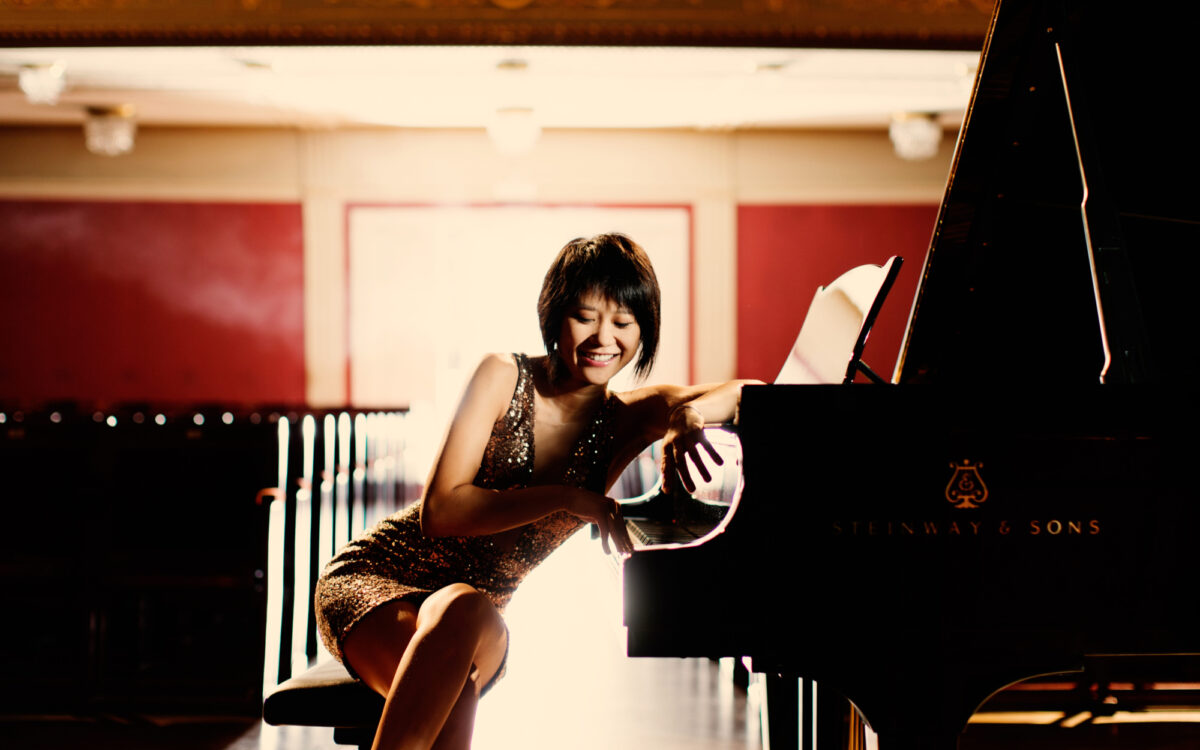Piano Concerto No. 2
Dmitri Dmitrievich Shostakovich was born in St. Petersburg, Russia, on September 25, 1906, and died in Moscow on August 9, 1975. The Piano Concerto No. 2 in F, Opus 102, was completed in February 1957 and was dedicated to Shostakovich’s son Maxim Dmitrievich Shostakovich, who played the solo part in the premiere on May 10, 1957, in the Great Hall of the Moscow Conservatory with the USSR Symphony Orchestra under Nikolai Anosov.
The score of the Piano Concerto No. 2 calls for solo piano plus piccolo, 2 flutes, 2 oboes, 2 clarinets, 2 bassoons, 4 horns, timpani, side drum, and strings (first and second violins, violas, cellos, and double basses). Duration is about 20 minutes.
Twenty-four extremely eventful years (filled with purges, war, evacuation, and a renewed Stalinist campaign against “formalism” in the arts) passed before Shostakovich created his Second Piano Concerto in 1957. This unusually sunny and fun-loving piece was written as a 19th birthday present for Shostakovich’s son, Maxim, at the time a music student and aspiring concert pianist. Like the Concertino for Two Pianos (1953), also written for Maxim, the Second Concerto was intended to be accessible to developing young pianists and makes relatively modest technical demands. In a letter to his composition student Edison Denisov (1929-1996), who would later become a major figure in Soviet music, Shostakovich wrote that the Second Concerto had “no artistic value.” Whether this judgement was to be taken seriously is a matter of debate; Shostakovich may well have been poking fun at the cliches of official Soviet cultural jargon.
The Second Concerto’s light-hearted, jocular mood comes in stark contrast to other works Shostakovich was writing at the time, especially the massive and tragic Tenth (1953) and Eleventh (1957) symphonies that preceded and followed it. At only about twenty minutes in length in three short movements, it is succinct and compact, with a predominance of what scholar Sophia Moshevich calls the “swift, sometimes hectic tempos” typical of much of Shostakovich’s music for the piano. The musical language is simple and notably transparent, featuring many passages in octaves and scales intentionally reminiscent of exercises assigned by a piano teacher, especially in the third movement.
The opening Allegro unfolds in traditional sonata form. Led by the bassoons, the woodwinds raise the curtain with a swift 4/4 toy-soldier marching accompaniment in F major. At measure seven the piano joins in, playing the striding main theme in octaves. The more lyrical legato second theme begins in D minor, then modulates to B-flat major to introduce a fugue-like episode packed with rapid arpeggios. A long cadenza follows before the concluding reprise and recapitulation of the two themes, with the march dominating.
Muted violins, violas, and cellos open the slow second movement, playing a meditative and restrained theme in C minor, almost a chorale in the style of Bach. The key changes to C major as the piano enters with a rapturous new descending theme in the right hand over arpeggios in triplets in the left. Variations of the two themes continue as the key shifts back to C minor. Following without pause, the third movement opens with a piano fanfare on C, establishing the tonic key of F and the pronounced dance rhythm of the first theme, descending chromatically with humorous effect. The meter changes to an unusual 7/8 for the restlessly athletic second theme, accompanied by pizzicato strings resembling a balalaika. Alternating episodes of 2/4 and 7/8 meter drive the tension throughout the movement. It has been suggested that Shostakovich was creating here the atmosphere of the colorful parades and processions of the Soviet era.
In a fond paternal salute to his son’s piano studies, Shostakovich concludes with several episodes of scale passages (modulating rapidly into different keys) in the style of the Hanon exercises assigned to (and often dreaded by) generations of piano students.
Harlow Robinson
Harlow Robinson is an author, lecturer, and Matthews Distinguished University Professor of History, Emeritus, at Northeastern University. His books include Sergei Prokofiev: A Biography and Russians in Hollywood, Hollywood’s Russians. His essays and reviews have appeared in the Boston Globe, New York Times, Los Angeles Times, Cineaste, and Opera News, and he has written program notes for the Boston Symphony Orchestra, Los Angeles Philharmonic, New York Philharmonic, and Metropolitan Opera.

